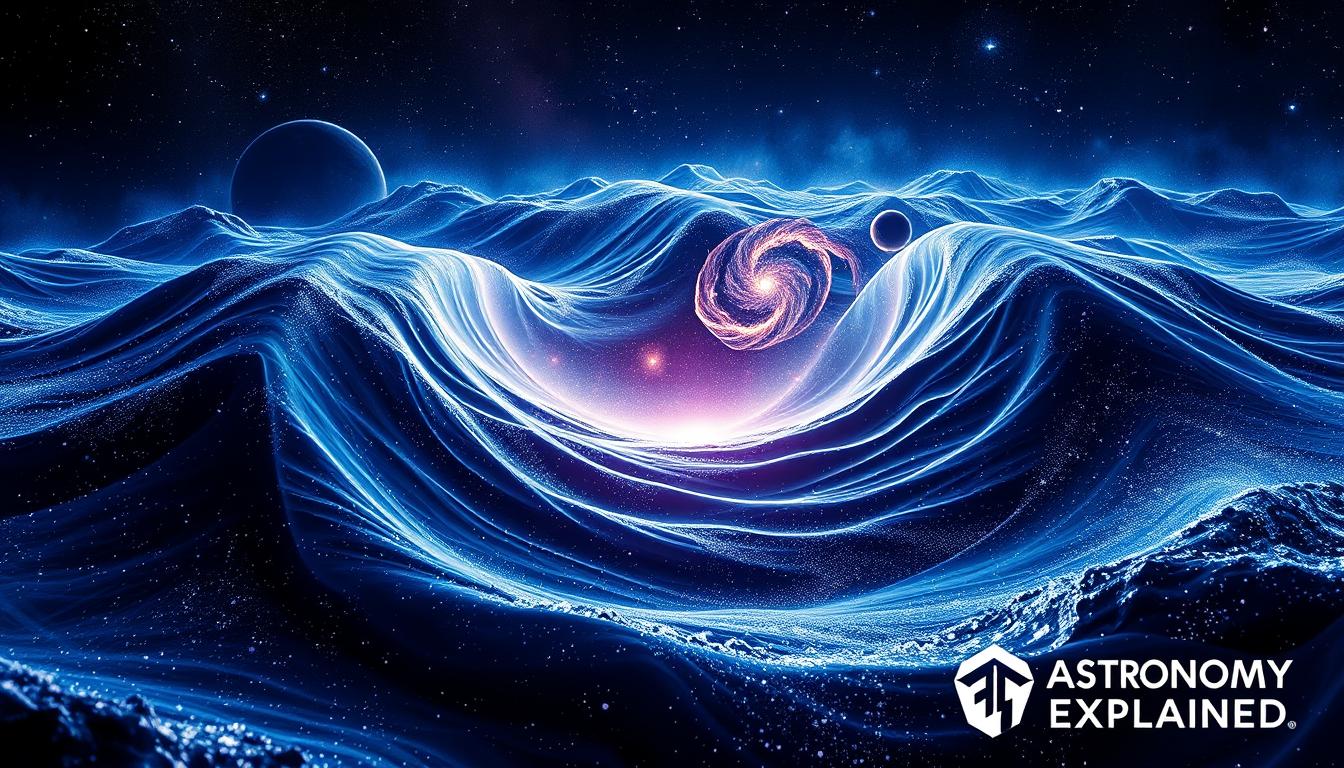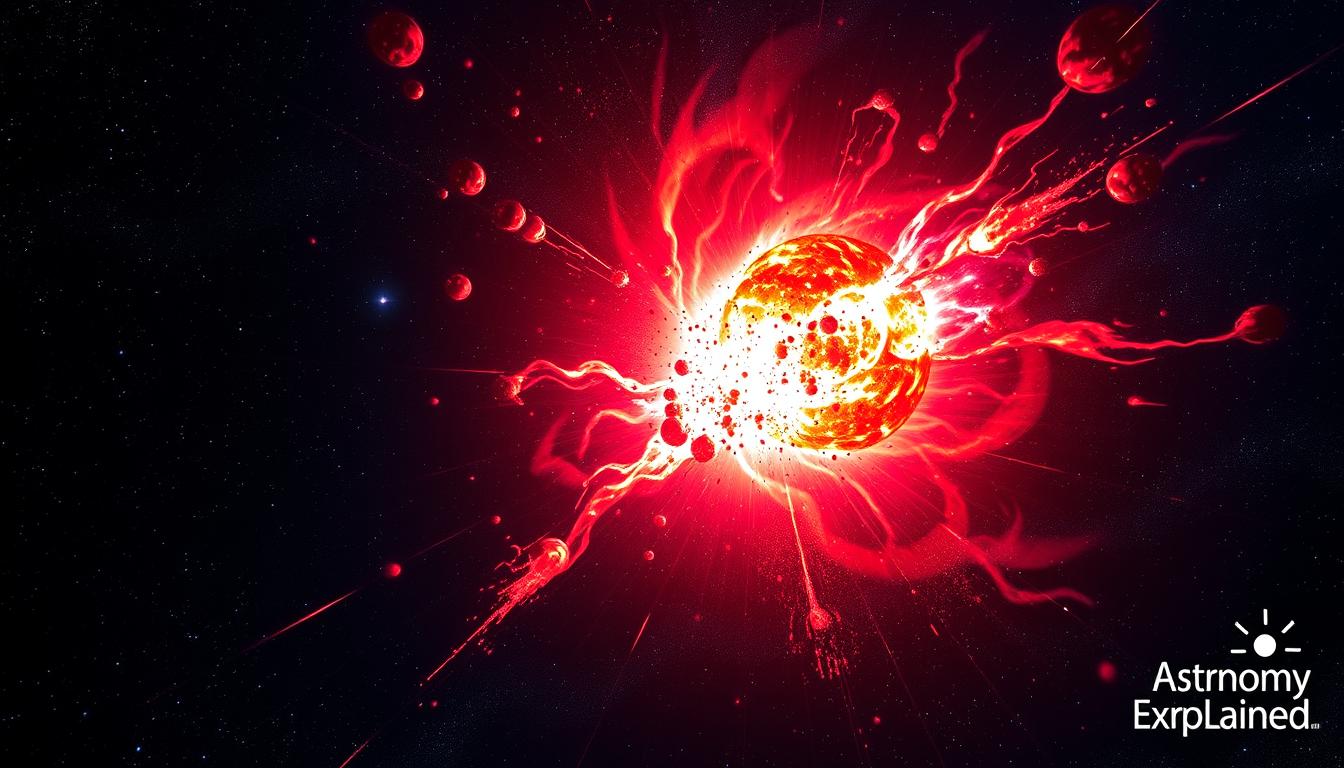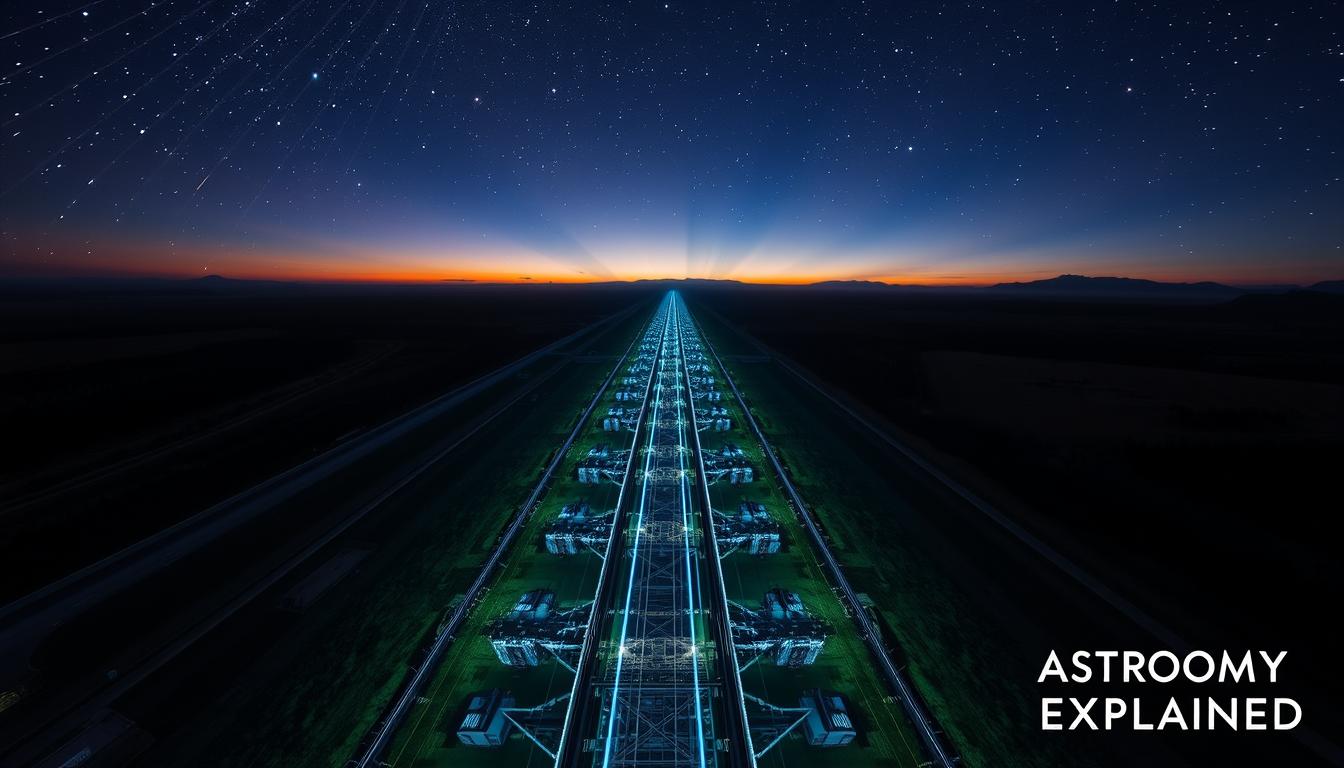When two black holes collide, they send ripples through space at the speed of light. We call these ripples gravitational waves. It was a theory up until 2015, when scientists detected the first gravitational wave. We never knew if our theory was correct until then, but we now know that it is real. But what is a gravitational wave? How does it affect our universe, galaxy, and planet?
Check this out, too: How Far is the Closest Black Hole to Earth?
Essentially, what a gravitational wave is that these waves are tiny disturbances in spacetime. They are incredibly small, so even massive events in space barely affect them. The signal from two merging black holes is only 1 in 100 billion trillion at Earth. Let’s look at what is a gravitational wave in more detail in this article.

Definition and Nature of Gravitational Waves
Gravitational waves are a key part of physics – mostly because of how much they affect everything in the universe, from the Big Bang to black holes. They first appeared in Einstein’s theory of relativity as ripples in spacetime. These waves carry information across the universe, like soundwaves on Earth, but on a much bigger and more complex structure.
Imagine that you throw a pebble into a pond. Once the pebble hits the water, waves spread out. Those are the gravitational waves in the space. The strength of the waves depends on what collides and how big they are. These waves come from big events in space, like when black holes merge or neutron stars collide. They move at the speed of light, stretching and squeezing space. These waves also have effects across the universe, but they are really small. LIGO, a special tool, first detected them in 2015. We can barely see these effects and see special tools or telescopes like LIGO or James Webb Telescope to measure their impact.
Also, gravitational waves move as fast as light, which is 186,000 miles per second. In 2017, scientists proved this by detecting waves from a neutron star collision. They also saw electromagnetic signals from the same event.
Einstein’s Theory of General Relativity
As I mentioned, gravitational waves come from Albert Einstein and his general relativity theory. He said gravity bends spacetime because of heavy objects. This differs from Newton’s idea of gravity as a force that acts instantly.
Eintein’s theory led to the prediction of gravitational waves; it didn’t really discover it directly. The main idea comes from the accelerating mass part of the theory. General relativity predicted back in the time that when massive objects (such as black holes or neutron stars) accelerate—especially in violent events like collisions—they disturb spacetime, creating waves that move outward at the speed of light.
Comparison to Electromagnetic Waves
Sometimes, people may confuse gravitational waves with electromagnetic waves. Indeed, they are somewhat similar but also very different. Gravitational waves and electromagnetic waves both move at the same speed. But they act differently with matter. Objects may stop electromagnetic waves or absorb them. Gravitational waves, however, go right through most things without much trouble.

Sources of Gravitational Waves
Gravitational waves are coming from astronomical events happening in the universe. Black hole collisions, supernovas, stars dying, and even the Big Bang created gravitational waves when it happened. Here are some of the sources we know that create gravitational waves.
- Binary Star Systems: Binary star systems have white dwarfs or neutron stars, and they can make gravitational waves when they go around, collide, or hit something. In each of these scenarios, they send out spacetime ripples. In 2017, scientists found waves from a neutron star collision in a galaxy far away from ours.
- Supernova Explosions: When stars die, they create big explosions, which we call supernova explosions. Like throwing a rock in a pebble, this also creates gravitational waves. These blasts can send energy to Earth, even from far away. It’s like a huge power burst.

- Black Hole Mergers: Black hole mergers are among the strongest sources of gravitational waves. The first gravitational wave we detected in 2015 with LIGO was from a black hole collision. In that specific case, two black holes bigger than our Sun collided.
- Early Universe: Scientists think that the Big Bang, which is the early universe, might have created primordial gravitational waves, as well. But they are only a mystery and a theory right now. Although, they can tell us about the universe’s first moments in detail.
Detection Methods and Technologies
Detecting gravitational waves is one of the most advanced achievements in modern physics and astronomy. We only recently detected their effects in 2015; this should say a lot about how hard it is. Detecting these faint ripples in spacetime requires highly sensitive technologies and complicated solutions.
However, gravitational wave astronomy has changed how we do certain things in astrophysics and astronomy. In 2015, the Laser Interferometer Gravitational-Wave Observatory (LIGO) made the first discovery on the effects of gravitational waves, also proving these waves actually exist. It detected a signal from two supermassive black holes that collided 1.3 billion years ago.
LIGO and VIRGO Observatories
LIGO uses laser interferometry to measure tiny changes in its arms, which are caused by gravitational waves. It has two sites, one in Louisiana and one in Washington. Each of them has 4-kilometer-long arms. LIGO was the first observatory to detect the first-ever gravitational wave in our history. It also made other discoveries after that.

Pulsar Timing Arrays
Pulsar timing arrays are another way to detect gravitational waves. They use the precise timing of pulsar signals to find low-frequency waves from supermassive black hole binary star systems. The North American Nanohertz Observatory for Gravitational Waves (NANOGrav) is the leading figure in pulsar timing arrays.
Testing General Relativity with Gravitational Waves
In addition to understanding the universe much better and clearer, gravitational waves also provide a powerful way to test Einstein’s General Theory of Relativity. Before we could see these waves, it was hard to prove his ideas were right because they were only a theory – like how black holes were.
Einstein’s theory says that gravitational waves should exist based on how the universe works. We have the option to check how true this theory is by watching and studying these waves, even in the most extreme places, like near black holes and neutron stars.
- Testing the speed of gravitational waves
General Relativity Prediction: Gravitational waves should spread at the speed of light.
Observational Test: The first detection of gravitational waves by LIGO in 2015 (from the merger of two black holes) and the subsequent detection of a neutron star merger in 2017 (GW170817) was used to confirm it.
- Testing the No-Hair Theorem
General Relativity Prediction: The no-hair theorem says a black hole is defined by just three things: its mass, charge, and spin. All other details (“hair”) about what formed it are lost.
Observational Test: Gravitational waves from merging black holes let us test this. Scientists study the waves after the merge (the ringdown phase) to measure the final black hole’s mass and spin. If these don’t match what’s expected, it could mean black holes have extra properties (“hair”) not explained by general relativity.
- Tests of Strong-Field Gravity
General Relativity Prediction: General Relativity says it should work even in the strongest gravity, like near black holes or neutron stars. But these are some of the hardest places to test.
Observational Test: Gravitational waves let us explore these extreme areas. In black hole mergers, the inspiral, merger, and ringdown phases help scientists study strong gravity like never before.
Conclusion
Understanding what is a gravitational wave can be complicated, mostly because we only recently discovered it. Before 2015, it was mostly a theory, coming from Eintein’s General Relativity theory. But now, it is a reality, but it recently happened. We’ve found about 50 black hole mergers, eight neutron star collisions, and six neutron star-black hole mergers that support the gravitational wave theory.
To contribute more to our journey to understand what is a gravitational wave and detect more of these, there are a lot of initiatives around the world. We can understand black holes, even the Big Bang, more deeply when we understand gravitational waves.
From Einstein’s prediction in 1916 to today’s discoveries, first started in 2015, we’ve made great progress. There is a lot to come, but at least we have now passed the first stage; we now know what is a gravitational wave in real life, not just in theory. The next step is to detect its effects more in detail and maybe see more of these waves happening.
FAQ
What are gravitational waves?
Gravitational waves are invisible ripples in space that move at the speed of light. They are tiny changes in gravity that happen when big objects move or speed up. These waves spread out from where they start, carrying energy with them.
How were gravitational waves predicted?
Albert Einstein predicted gravitational waves over 100 years ago with his theory of general relativity. He said gravity bends space and time, leading to these waves.
What are some sources of gravitational waves?
Gravitational waves come from things like binary star systems, big explosions in space, and when black holes merge. Even the early universe might have made these waves during the Big Bang.
How are gravitational waves detected?
Scientists use special tools like LIGO and VIRGO to find gravitational waves. These tools look for tiny changes in distance caused by the waves. Another way is with Pulsar Timing Arrays, which track the signals from stars to spot low-frequency waves.
What is the speed of gravitational waves?
Gravitational waves go as fast as light, which is a key idea in Einstein’s theory. In 2017, scientists saw gravitational waves and light from a star merger at the same time. This proved that gravitational waves move at the speed of light.
How are gravitational waves different from electromagnetic waves?
Gravitational waves don’t interact much with matter, so they can go through things that light can’t. This lets us see things in space that we couldn’t see before.